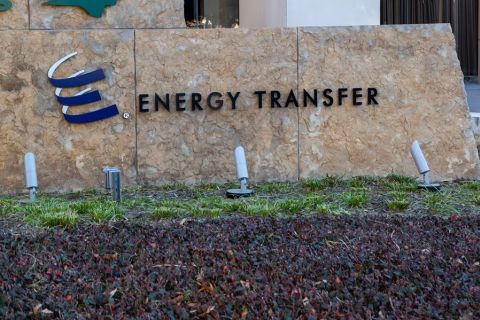Emerging shale plays are oil prone and liquids-rich, according to speakers at Hart Energy's DUG Conference in Fort Worth, Texas.
Brandt Temple, president of Sunrise Exploration and Production Co., said, "Emerging is not the right word for the Sunniland Trend play in Florida—infancy would be more appropriate."
Sunrise is a private company that got its start in the Marcellus and Utica plays. During the past two years the company has put together 135,000 acres in southern Florida looking at the Cretaceous-age Lower Sunniland Trend.
"It is too early to know if it is a horizontal or vertical play," according to Temple. However, there is a potential for 200 to 500 million BOE in the liquids-rich play. The company's acreage is continuous with eight-year terms.
Currently the area has conventional production from 150 wells. Exxon Corp. was the first company to drill in the area in 1940. The 150 Upper Sunniland wells have produced 120 million bbl. to date. Production peaked in late 1970s around 16,000 bbl. per day. Today 15 wells are producing 2,300 bbl. per day, 11 of which are new short-reach 1,000-foot horizontals.
During the past two years, Sunrise has applied proprietary science to 35 wells that are 50 years old. The source rock data showed that the 100-foot-thick Sunniland shale, at a depth of 11,500 feet, had 6% porosity, permeability of 400 nanodarcies and is made of 75% of carbonates and 20% clay.
Sunrise is a "specialized first mover in these resource plays," said Temple. The company gets into big plays early, generates its own proprietary science and is able to get into the plays quickly for low costs.
"We're looking at a three-for-one potentiality," said Temple. There are two other zones—the Pumpkin Bay below and Dollar Bay above—tightly contained by anhydrites.
During the panelists' presentations, Crimson Energy Partners III president Frank Starr spoke about the company's "development of a dream." Crimson operates 13 horizontal producing wells in the Woodbine, Eagle Ford and Buda formations and currently has one active rig developing its 27,000-net-acre position, mainly in Brazos and Robertson counties, Texas.
Opportunities include other horizons like the Austin Chalk, Eagle Ford, Bossier, Cotton Valley, Georgetown, Edwards and Glen Rose, but with low gas prices the liquids-rich targets are more desirable, he said.
While Crimson's future development programs consist of multi-stacked pay zones with both shallow oil targets from the Woodbine C through the Pettet, plus deep gas targets from the Knowles through the Deep Bossier, current activity consists of horizontal multi-stage frac development in the Woodbine, Eagle Ford and Buda.
In the Woodbine, Crimson's acreage is in the Madisonville West-Kurten fields in northern Brazos County. In 2006, activity in the Woodbine formation increased, driven by horizontal wells fractured with multi-stage completions. Well performance has increased over time, as the length of laterals and the number of stages have increased. It now takes only 17 days to drill a well. The economics are also compelling with 81 locations. The company currently has seven producing wells in the Woodbine.
The estimated ultimate recovery per foot of lateral length of Crimson's most recent four wells with at least two months of production history has averaged 61 bbl. of oil with average stage length of 292 feet.
In the Buda, Crimson's acreage is between ICI and Kurten fields. The company currently has five producing wells in the area. Originally, most horizontal wells were drilled with open-hole completions, but within the last few years Crimson has completed horizontal Buda wells with cased hole, multi-staged fracs. Crimson has 52 development locations in the Buda where it is currently drilling its fifth well. XTO Energy is active in the area, so Crimson is watching XTO's completion techniques and results closely.
In the Eagle Ford shale, Crimson has a resource potential of 55 million BOE and more than 20 locations. The company is currently completing its first Eagle Ford well.
According to Starr, "The area has tremendous economics." The Woodbine is expected to produce greater than 350,000 bbl. while the Buda should produce 250,000 to 300,000 bbl per well. Crimson has one rig running now and expects to have four by 2018 with 350 wells identified and 85 million BOE resource potential.
Meanwhile, the Tuscaloosa Marine Shale (TMS) is turning into a prolific new play, said Robert C. Turnham, president and chief operating officer of Goodrich Petroleum Corp. Goodrich, which got started in the Haynesville shale, has 85,000 net acres leased for about $17 million or $200 per acre in the TMS. Average depth of the play is 11,000 feet to 13,000 feet with a thickness of 100 feet to 200 feet and high-quality crude of 38 to 40 degrees API.
Goodrich is focused on unconventional resource plays in Louisiana, Texas and Mississippi with a 2012 budget of $250 million and 80% of drilling capex allocated to oil exposure. The company has 3P resource potential of more than 7 trillion cubic feet equivalent and a 40-year drilling inventory.
The company has a 2012 capex of $20 million for the Tuscaloosa Marine Shale. Goodrich expects to drill four gross, (two net) wells in 2012. The play has similar characteristics to the oil window of the Eagle Ford with favorable commodity-price realizations, regulatory regimes and friendly landowners. It also has a close proximity to markets.
TMS has similar resource potential to the Eagle Ford though it is a smaller area with high resistivity and high oil saturation. According to Turnham there is a "layer-cake of shale" within the mature source rock of the Tuscaloosa. "It is an over-pressured environment where we are drilling between 11,000 feet to 13,000 feet with 35% to 45% clay content," he says. According to Turnham, "It's the early innings but we like what we see so far. It's all about getting the costs down."
Recommended Reading
Exxon Mobil, Chevron See Profits Fall in 1Q Earnings
2024-04-26 - Chevron and Exxon Mobil are feeling the pinch of weak energy prices, particularly natural gas, and fuels margins that have cooled in the last year.
Marathon Oil Declares 1Q Dividend
2024-04-26 - Marathon Oil’s first quarter 2024 dividend is payable on June 10.
Talos Energy Expands Leadership Team After $1.29B QuarterNorth Deal
2024-04-25 - Talos Energy President and CEO Tim Duncan said the company has expanded its leadership team as the company integrates its QuarterNorth Energy acquisition.
Energy Transfer Ups Quarterly Cash Distribution
2024-04-25 - Energy Transfer will increase its dividend by about 3%.
From Restructuring to Reinvention, Weatherford Upbeat on Upcycle
2024-02-11 - Weatherford CEO Girish Saligram charts course for growth as the company looks to enter the third year of what appears to be a long upcycle.




